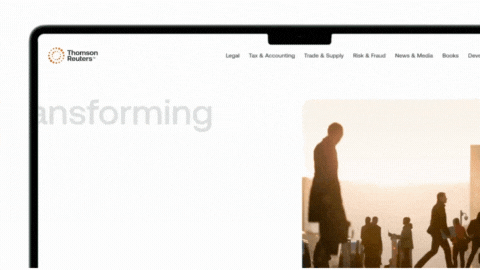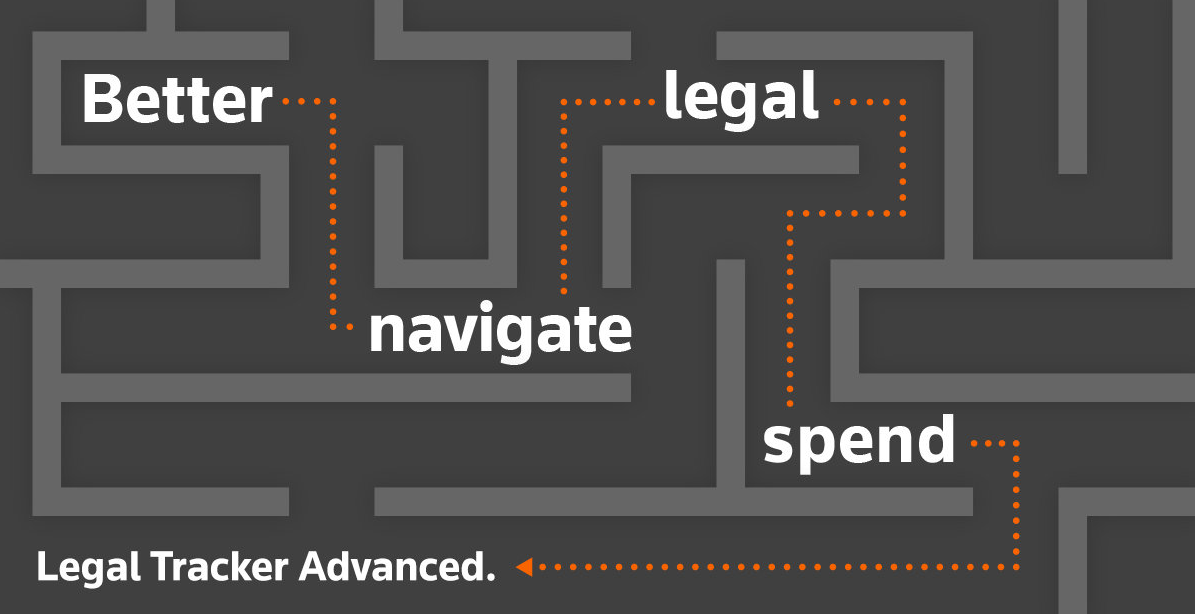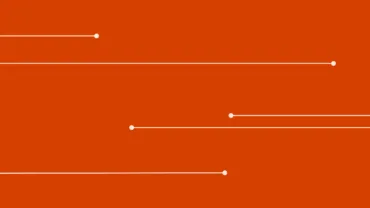Guide to the LEDES billing format and how it helps to reduce the risk of e-billing errors
Jump to ↓
What LEDES format is and how it is changing today
What is the LEDES format based on
What are the benefits of using LEDES legal billing format
What are the challenges when enterprises are not using LEDES format
What are the benefits of a legal e-billing software that supports LEDES format
Save time and money with a legal e-billing solution
What LEDES format is and how it is changing today?
The Legal Electronic Data Exchange Standard (LEDES, pronounced “leads”) is a standardized invoice file format in the legal industry. It was created for the electronic exchange of billing and other information between corporations and law firms. In other words, it allows the law firm to submit an electronic invoice in a consistent and easy to understand way for the legal operations department to know details about the legal work and the spend associated with that invoice.
Depending on the e-billing format, a LEDES file can include more than 250 electronic data interchange (EDI) billing details that deliver invoice details about the invoice to the corporation which makes the billing easier. With the enhanced clarity about the invoice, both law firm and corporation benefit from this format, and it streamlines the payment and processing workflow.
LEDES has evolved since its creation in 1995 to keep up with changes in the law and technology. As generative artificial intelligence (GenAI) gains a foothold in the legal industry, the use of LEDES will continue to adjust. Firms can use GenAI to automate the creation of LEDES-compliant invoices and validate them by cross-referencing them against client-specific billing guidelines, for instance. A generative AI tool could identify errors and suggest fixes based on historical data or predict future costs for a corporate legal department based on historical billing data.

AI news and insights
Industry-leading insights, updates, and all things AI @ Thomson Reuters
Join community ↗Beyond the impacts of generative AI, LEDES connects to other trends in the legal industry as well. For instance, as globalization of legal services has increased, LEDES formats have been updated to offer fields for multiple tax levels and exchange rate details. LEDES supports firms in complying with corporate legal departments’ desire for more transparency in billing because the standard billing data makes cost analysis easier.
Standardization also makes it easier for corporate legal teams to use their billing data for cost benchmarking, and trend analysis and to monitor for firm compliance with their billing guidelines.
When was LEDES format created?
The LEDES format was created by the LEDES Oversight Committee (LOC) in 1995. This informal group of legal representatives from law firms, software vendors, the American Bar Association (ABA), universities, and other legal entities was tasked with producing a standardized and consistent framework for the exchange of e-billing information.
As technology advanced and legal industry requirements had become more complex, clients and outside counsel saw a need for uniformity in billing. LEDES format helped solve this problem in the legal billing environment by providing a systematic structure. When industry needs change, additional formats have been developed to address those requirements.
What is the LEDES format based on?
To standardize legal e-billing across organizations, and to avoid different formats in the legal industry, the LOC decided to use open standards that are based on the following five basic principles to guide the LEDES formats:
- Keep it simple
- Make it unambiguous
- Diverge from existing formats as little as absolutely necessary
- Only ask for information the law firm is typically able to provide from their financial system
- Meet the needs of enterprises, law firms and legal industry software vendors to the maximum extent possible consistent with the first four criteria.
The standard LEDES formats help corporate legal teams review invoices. They are able to clearly understand and review attorneys’ itemized tasks and expenses. Firms benefit because they receive faster payment on their invoices with less back and forth.
The LOC now offers several different formats to account for legal e-billing software issues, such as hourly billing, expenses, tax and multiple currencies. The LEDES e-billing standards are globally recognized and accepted as industry-specific EDI (Electronic Data Interchange) standards for the exchange of legal e-billing information.
Additionally, when a LEDES invoice is submitted, part of the data contained can include Uniform Task-Based Management System codes.
What are Uniform Task-Based Management System codes?
Uniform Task-Based Management System (UTBMS) is a series of codes developed by the ABA to classify legal services that the law firm performs and submits as electronic invoice. Within UTBMS you may find task codes, activity codes and expense codes.
- Task codes are a granular description of the service provided by area of law (for example: Within Litigation, under assessment, task code L120 Analysis/Strategy).
- Activity codes identify the specific service performed (for example: Spoke to witness in relation to slip and fall case).
- Expense codes categorize expenses made by the law firm (for example: Meals, court fees, and photocopies).
In 2023, the LOC released UTBMS codes specific to patent prosecution. Throughout the years, the LOC has created multiple LEDES billing formats to account for various legal billing needs.
What are the types of LEDES billing formats?
Several different LEDES billing format types were specified by the LEDES Oversight Committee with the goal to standardize e-billing across the industry. There are two main LEDES billing formats — 1998 (B & BI) and XML.
What is LEDES 1998?
LEDES 1998 format was the original created in 1998 to bring a standard billing structure to legal e-billing. It was quickly updated and replaced by LEDES 1998B.
LEDES 1998B
LEDES 1998B is a pipe delimited format containing 24 fields. It is currently the most-widely used e-billing standard in the legal industry in the United States.
LEDES 1998BI
LEDES 1998BI builds on from the 1998B version to allow for international billing. LEDES 1998BI version includes 51 fields to allow more information such as timekeeper classifications, tax rate, law firm and client addresses.
In January of 2020 LEDES 1998BI was updated to extend the tax rate field.
What is LEDES XML?
LEDES XML was introduced in 2000. This format contained much more information than the LEDES 1998B format and was made more robust to accommodate the complexity of fee arrangements between corporations and law firms. The current LEDES XML formats are:
LEDES XML 2000
The LEDES XML 2000 file format was created in 2000 and has been retired by the LOC as of March 1, 2022. This format included 125 data fields within 7 segments.
LEDES XML format has had a few version updates since its inception; in 2006 (LEDES XML 2.0), 2008 (LEDES XML 2.1) and in 2020 (LEDES XML 2.2) and 2023 (LEDES XML 2.2.1)
LEDES XML 2.0
In 2006, the number of fields available increased to 153 and 8 additional segment types were added bringing the total segments to 15.
LEDES XML 2.1
In 2008, the LEDES Oversight Committee released LEDES 2.1 due to the growth of alternative fee arrangements and the varying math logic that was used between time and billing software and third-party e-billing systems. With version 2.1 the LOC hoped that the math logic could be standardized across multiple systems involved with legal e-billing. In 2014, 2.1 was revised to extend the timekeeper classifications.
Version 2.1 also included more comprehensive tax support and additional data elements. A new segment was added for Regulatory Statement to support invoice level requirements. This format increased the data elements to 191 and a total of 16 segments.
LEDES XML 2.2
In 2020, XML 2.2 was released by the LOC to support Tiered Taxes, increasing the segment types to 18 and the data elements to 205.
LEDES XML 2.2.1 was released in March 2023 and updated in June 2023. It took the number of data elements to 216 in the same 18 segments. The June update revised some calculations.
How does a LEDES file work?
A LEDES file in an electronic billing solution that gives the corporation clear insight into the specific legal work being completed by the law firm. Some of what is viewable in the file is:
- Billing Start Date
- Billing End Date
- Timekeeper Name
- Timekeeper Classification
- Line-Item Description
- Line-Item Number of Units
- Line-Item Unit Cost
Requiring a LEDES file during the billing process allows corporations to dissect a legal invoice to see precisely how money is spent. Legal departments are able to review the different task codes, activity codes and expense codes which enables them to determine if the time spent on the work is warranted or if they may need to put limits on certain areas of legal work going forward.
LEDES format has many benefits for enterprises and law firms, which makes it easy to adapt it into your best practices, as it is the standard for e-billing in the legal industry.

White paper
Unlock the hidden value in your legal department with data-driven insights
Access white paper ↗What are the benefits of using LEDES legal billing format?
There are many benefits for legal departments to require law firms to submit invoices using LEDES format.
A few LEDES benefits are:
- Standardizes legal billing globally - allows a consistent invoice format no matter where in the world the invoice comes from.
- Provides better overview on legal spend like hourly billing, and other related expenses.
- Reduces the risk to receive invoices in non-standardized way such as a PDF, paper or other format which makes it hard to convert into a standardized format.
- Makes tracking easier for the legal department to understand which work the outside counsel completed.
- Decreases invoice processing time and payment, so your law firm gets paid faster.
- Enables quick access, data reporting and information of individual line items and overall invoice details.
- Provides ability to audit LEDES invoices to ensure billing compliance.
How do you create a LEDES format invoice for legal billing?
LEDES files can be created in different ways:
- In-house: A law firm can input its legal activities and expenses within its time and billing software. This software will create an invoice in a LEDES file format. Once the LEDES formatted invoice is created, the law firm will upload the invoice directly into the legal e-billing software, allowing the corporate legal department to view the invoice in an easy to read, line-by-line view.
- Externally: Many law firms will use third-party e-billing software to create, process and submit their LEDES invoice to their billing platforms.
How do you convert a PDF or paper invoice to LEDES format?
Invoices can be converted from PDF to LEDES in a few ways. Below are some of the common ways of conversion:
- Software: Optical character recognition (OCR) software can efficiently automate the conversion process by accurately reading and extracting data from invoices and converting it into the LEDES format. With continuous improvements in technology, these solutions are becoming increasingly reliable and can handle various invoice formats with precision.
- Manually: A human reads the PDF or paper invoice and manually keys the invoice details into a LEDES generator. The generator turns the original document turneddocument into a LEDES formatted invoice. (This can be time-consuming and lead to errors when a person inputs details in the wrong field or has typos.)
- Combination of manual and software: Use OCR technology for the initial conversion and then hand it off to a human to fill in missing fields and check for accuracy. (There are third party companies that can convert invoices for a fee.)
The best spend management solutions will use advanced AI to read the data, check it for accuracy, and ensure consistency with the rest of your invoices.
What are the challenges when enterprises are not using LEDES format?
Some law firms and corporations have not taken the time to switch to LEDES billing format. This creates problems and inefficiencies on both the law firm’s and corporate legal department’s side. A few of the problems often associated with PDF’s and other paper invoices are:
- Inconsistencies as these invoices are usually in a different layout from law firm to law firm
- Violations against the corporate legal billing guidelines are challenging to catch
- Time consuming to review invoices
- Pertinent information on the invoices may be missing
- Difficult to obtain reporting on PDFs
- Duplicate invoices often slip through and are paid twice
- Burdensome and inefficient invoice tracking
- Too manual of a process and more prone to error
- Time to pay invoices take longer, so law firm gets paid later
Since 2020, LEDES has also included error codes to standardize e-billing validation errors. “The need for Standardized Error Codes was expressed by many of our law firm members over the years,” according to the LEDES Oversight Committee announcement. “As we heard, many hours are spent by law firms and corporate legal departments tracking down errors based on nonstandard codes that are often-times set forth as an unintelligible error message that gives no indication of what needs to be fixed.” The standardize codes aims to fix that and simplify the repair process. The codes were updated in 2024.
If you want to avoid the hassle of dealing with PDFs and paper invoices, which are often prone to error and inconsistencies, then you might want to consider a legal e-billing software that supports LEDES e-billing format.
What are the benefits of a legal e-billing software that supports LEDES format?
A legal e-billing software that works with LEDES format allows you to have more control over your spend and you can incorporate automation in the invoice review process.
Benefits of a legal e-billing software include:
- Enforces automatic timekeeper rates, expense compliance and other billing guidelines
- Generates alerts for over-budget spending
- Eliminates manual processes and paper invoice approvals
- Tracks all invoices and includes search capabilities in one solution
- Handles the complex challenges of international e-billing
Save time and money with a legal e-billing solution
The use of the LEDES format benefits both legal departments and their outside counsel. Corporate clients prefer to take advantage of increasing efficiency and reducing legal cost with an e-billing solution that supports LEDES format. They not only save time during the invoice review and payment process, but they also reduce the risk of manual invoice mistakes and double payment errors.
Depending on your organization’s size and needs, you may need a solution that keeps up with the constant changes in legal billing guidelines worldwide. Consider a trusted and most widely used e-billing software like Legal Tracker Advanced.

Legal Tracker Advanced
Control your outside counsel spend and better negotiate matters.
Product overview ↗








